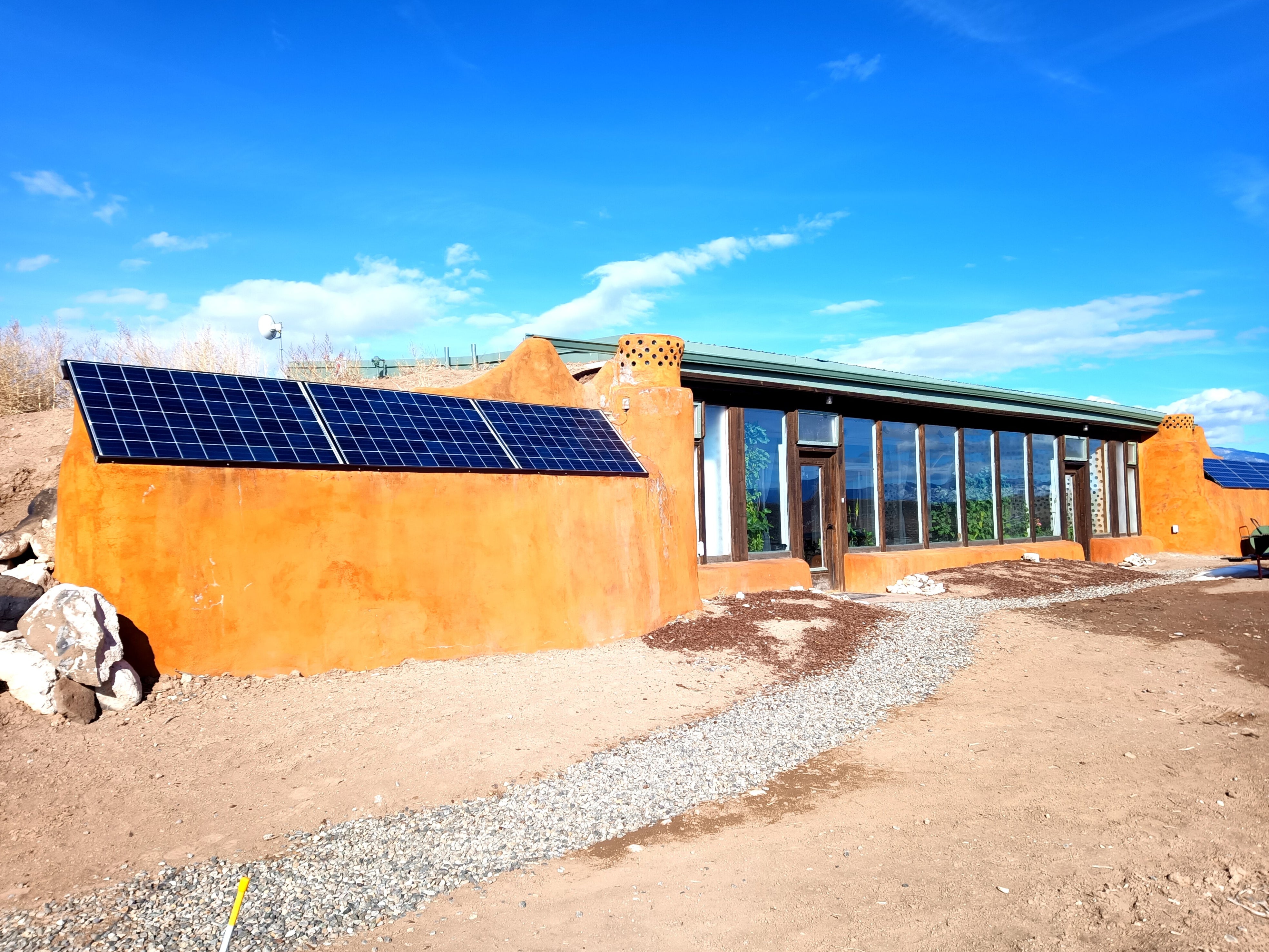Welcome to Earthship Biotecture, New Mexico’s decades-long experiment in carbon-free living
An effort to cut emissions and empty landfills has guided home designs that prove it’s possible to turn trash into a tourist attraction, writes Elizabeth Miller

The gleaming, glass fronts of the homes near the Earthship Biotecture visitor centre face south, like sunflowers following the light. Or perhaps more appropriately, like solar panels tilted to track it. Each of those houses is effectively a small solar engine, using the sun’s light for heat as part of a design that aims to be self-sufficient and carbon-free.
This community of roughly 80 homes in the high desert of northern New Mexico, about half an hour’s drive west of Taos, has hosted an ongoing experiment in sustainable construction for half a century. Michael Reynolds, founder and architect of this community, dubbed the houses he designed and crafted “Earthships,” invoking the idea of other isolated voyagers, like Noah loading his boat with everything needed to survive. The community itself they call the “Greater World”.

Tourists stopping by for a guided tour (self-guided options are also available) gather in the visitor centre, checking out posters that explain the design principles of an Earthship. These are homes that handle their own heating, cooling, water supply, sewage management and even some food production.
“If the building, the home, addresses each one of these points, that home individually is making not only a statement but a step in the direction of carbon-zero living,” Reynolds said in a 2009 TEDx Talk.
The bottoms of salvaged glass bottles and aluminium cans incorporated into the walls still stick out, patterned into glittering mosaics
The visitor centre deploys some of these same ideas. Planters line the windows, smelling damp and loamy and leading to a bathroom where the toilet flushes with water filtered by the plants themselves.
The tour heads first to an education centre, where repurposed church pews face whiteboards and illustrations. Tomatoes, bananas, geraniums and petunias grow along the windows and a leafy vine climbs a wall honeycombed with blue and green glass bottles that let in pockets of light. The tour guide, Ben, who bought a home here last year, talks tactics.
Earthships use natural and recycled materials – which is a nice way of saying they’re built with rubbish and mud. A U-shaped main wall that opens south to a bank of windows is made of bald tyres filled with packed earth. The approach blends ancient construction techniques (take the 1,000-year-old Taos Pueblo, a half-hour drive east of the Earthships) with an urgent, modern search for better ways to dispose of garbage.

The United States alone discards 246 million tyres a year, which can leach toxins and micro-plastics into water supplies. A single Earthship swallows more than 1,000 tyres, levelled and laid like bricks. Adobe mud plaster then creates a flat wall. Often, the bottoms of salvaged glass bottles and aluminium cans incorporated into the walls still stick out, patterned into glittering mosaics. Finished rooms are airy, light and touched with sculpted concrete and rounded corners that lend a sense that they were more grown than built.
Thick, rear walls and cement floors warm up in the sunshine streaming through windows positioned to soak in lower-angle winter light. That warmth then radiates back into the room as passive solar heat. In finely tuned designs, indoor temperatures hover around 17-23C year-round.
Solar panels provide enough electricity to run a computer or flatscreen TV. Rooftops (laid with scrap metal from discarded vehicles and appliances) funnel rainwater and snowmelt into cisterns that, even in this dry climate, provide just enough water for a pair of occupants if they’re careful not to run the taps. Water is used four times: filtered and run first to sinks, showers, or baths; then flowing as grey water to indoor gardens; then through toilets; then out to a field where fruit trees, like apples or figs, often grow.

The tour walks visitors by the equivalent of studio apartments, early experiments in Earthship designs that now house students. They’re using a low-tech solar water heater, where water jugs filled with a foot pump sit in the windows soaking in the sun all day to heat water for an evening shower. More contemporary designs have heated up enough water to run washing machines.
Earthships have been built in all 50 states and around 30 countries, sometimes imported as part of disaster relief efforts and utilising plastic waste as building materials – stuffing plastic bottles with plastic bags to create bricks strong enough to hold up a wall, for example. They don’t pop up in the suburbs as much as they appear in rural areas, providing off-grid living to people who don’t have the option to tap into the grid anyway. The only three Earthship communities are in Taos County, New Mexico, which issues building permits for them, their unorthodox materials vaguely camouflaged.
Travel essentials
Visitors looking to experience zero emissions living can take a tour or book an overnight stay in some of the model homes, or learn how to build their own through four-week classes at the Earthship Academy.
Join our commenting forum
Join thought-provoking conversations, follow other Independent readers and see their replies
Comments
Bookmark popover
Removed from bookmarks